July Gardening Calendar for California: Your Guide to a Flourishing Summer Garden
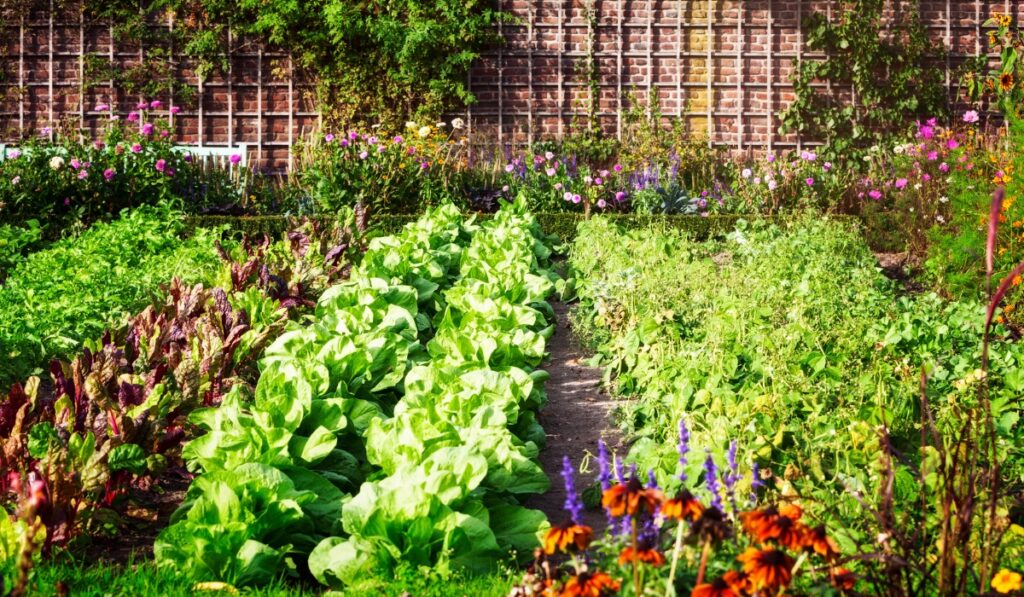
July in California brings long, warm days and abundant sunshine, making it a prime time for gardening activities. Whether you’re a seasoned pro or just starting out, this July gardening calendar will guide you through the best planting schedules and essential tasks to keep your landscape thriving. At DK Landscaping, we’re committed to helping you achieve a beautiful and productive garden all year round.
Planting Schedule for July
Despite the heat, July is still a great time to plant several vegetables, herbs, and flowers in California. Consider these options:
- Vegetables:
- Warm-season vegetables: Tomatoes, peppers, eggplant, cucumbers, squash, beans, okra, melons
- Leafy greens: Lettuce, spinach, Swiss chard (plant in partial shade to prevent bolting)
- Root vegetables: Carrots, beets, radishes
- Herbs:
- Basil, cilantro, dill, parsley, rosemary, thyme
- Flowers:
- Sun-loving annuals: Zinnias, sunflowers, cosmos, marigolds, petunias
- Heat-tolerant perennials: Salvia, lantana, verbena, yarrow
Essential Gardening Tasks for July
In addition to planting, July requires attention to other essential gardening tasks:
- Watering: With rising temperatures, watering becomes crucial. Water deeply and less frequently, ideally in the early morning or late evening to minimize evaporation. Consider using drip irrigation or soaker hoses for efficient water delivery.
- Weeding: Stay on top of weed control to prevent them from competing with your plants for water and nutrients. Mulching can help suppress weed growth.
- Deadheading: Regularly remove spent flowers to encourage continuous blooming and prevent plants from going to seed.
- Fertilizing: Feed your plants with a balanced fertilizer to support their growth and flowering during the summer months.
- Pest and Disease Control: Monitor your plants for signs of pests and diseases. Take prompt action to address any issues before they spread.
- Harvesting: Enjoy the fruits of your labor by harvesting ripe vegetables, herbs, and flowers regularly.
Additional Tips for July Gardening in California
- Protect from Heat: Provide shade for delicate plants during the hottest part of the day. Consider using shade cloth or strategically placing plants near larger trees or structures.
- Conserve Water: Implement water-wise gardening practices like collecting rainwater, using mulch, and grouping plants with similar water needs.
- Prepare for Fall: Start planning for your fall garden by ordering seeds and preparing planting areas.
DK Landscaping is Here to Help
If you need assistance with any of these July gardening tasks or want to create a beautiful and thriving landscape, DK Landscaping is ready to lend a hand. Our team of experts can provide personalized advice, design services, and professional installation and maintenance to ensure your garden flourishes throughout the summer and beyond.
Contact us today for a free consultation and let us help you make the most of your July gardening endeavors.
Remember, gardening is a journey of continuous learning and adaptation. By following this July gardening calendar and staying proactive with your gardening tasks, you’ll be well on your way to enjoying a bountiful and beautiful summer landscape.
Summer Pests and Diseases: Safeguarding Your California Garden in July
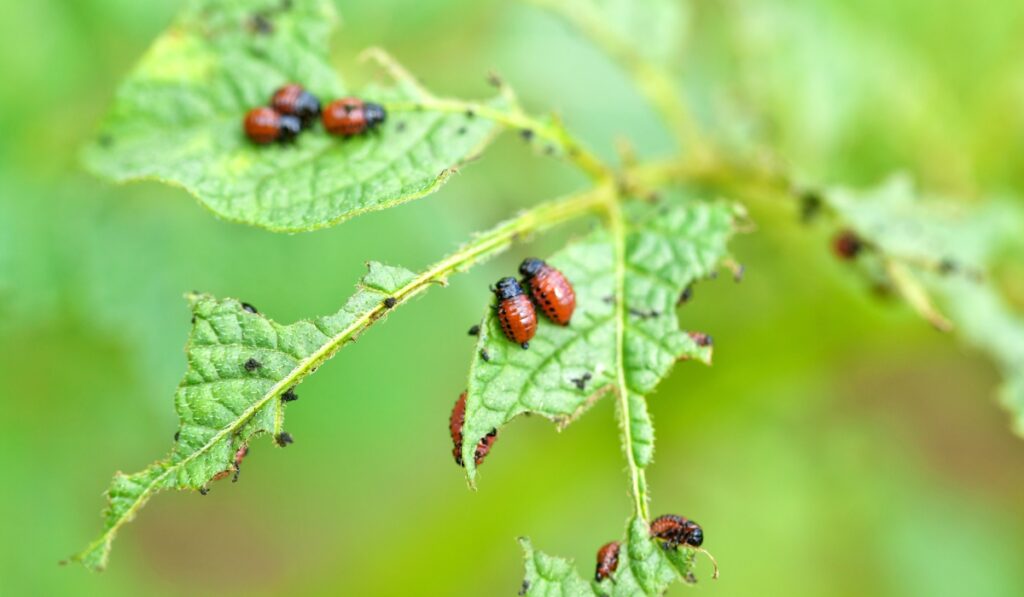
July in California brings long, warm days, vibrant blooms, and unfortunately, a surge in garden pests and diseases. These unwelcome visitors can quickly wreak havoc on your carefully cultivated landscape if left unchecked. DK Landscaping is here to arm you with the knowledge and tools to identify and manage these common summertime threats, ensuring your garden stays healthy and beautiful all season long.
Understanding Common Summer Pests
Several pests thrive in the warm July weather, posing a significant threat to your plants. Here are a few to watch out for:
- Aphids: These tiny, sap-sucking insects can stunt plant growth and transmit diseases. Look for clusters of aphids on the undersides of leaves and stems.
- Whiteflies: Similar to aphids, whiteflies feed on plant sap and weaken plants. They are tiny, white insects that flutter when disturbed.
- Spider Mites: These minuscule pests create fine webbing on plants and cause stippling on leaves. Hot, dry conditions favor their proliferation.
- Snails and Slugs: These slimy creatures feed on foliage and leave telltale trails of slime. They are most active at night and during damp weather.
Identifying Common Summer Diseases
In addition to pests, several diseases can afflict your garden in the summer heat. These include:
- Powdery Mildew: This fungal disease appears as a white, powdery coating on leaves and stems. It thrives in warm, humid conditions.
- Leaf Spot: Various fungi cause leaf spot diseases, resulting in brown or black spots on leaves. These diseases can weaken plants and reduce their aesthetic appeal.
- Root Rot: Overwatering or poor drainage can lead to root rot, a fungal disease that attacks plant roots and causes wilting and decline.
Practical Pest and Disease Management Tips
Fortunately, you can take several steps to manage summer pests and diseases effectively:
- Cultural Practices:
- Proper Watering: Avoid overwatering, which can create a favorable environment for fungal diseases and attract pests like snails and slugs.
- Good Sanitation: Remove fallen leaves, debris, and infected plant material to reduce pest and disease harborage.
- Crop Rotation: Rotate susceptible plants to different locations each year to disrupt pest and disease cycles.
- Plant Selection: Choose resistant varieties and maintain healthy plants, which are less susceptible to pests and diseases.
- Natural Controls:
- Beneficial Insects: Encourage natural predators like ladybugs, lacewings, and praying mantises to control aphid and whitefly populations.
- Organic Sprays: Neem oil, insecticidal soap, and horticultural oil can effectively manage certain pests and diseases.
- Homemade Remedies: Garlic spray, baking soda solutions, and diatomaceous earth can offer some pest control benefits.
- Chemical Controls:
- Targeted Pesticides: If natural and cultural controls fail, consider using targeted pesticides. Always follow label instructions carefully and choose products that are safe for beneficial insects and the environment.
DK Landscaping’s Expertise
At DK Landscaping, we understand the unique challenges California gardens face during the summer months. Our experienced team can help you identify and manage pests and diseases effectively, utilizing a combination of cultural, natural, and, when necessary, chemical controls. We prioritize sustainable practices that protect your garden and the environment.
Don’t let summer pests and diseases ruin your garden’s beauty. Contact DK Landscaping today for a consultation and let us help you keep your landscape healthy and thriving all season long.
Remember, early detection and prompt action are key to successful pest and disease management. By staying vigilant and implementing these tips, you can protect your garden and enjoy its splendor throughout the summer months.
Drought-Tolerant Landscaping: Creating a Thriving Oasis in California’s Summer Sun
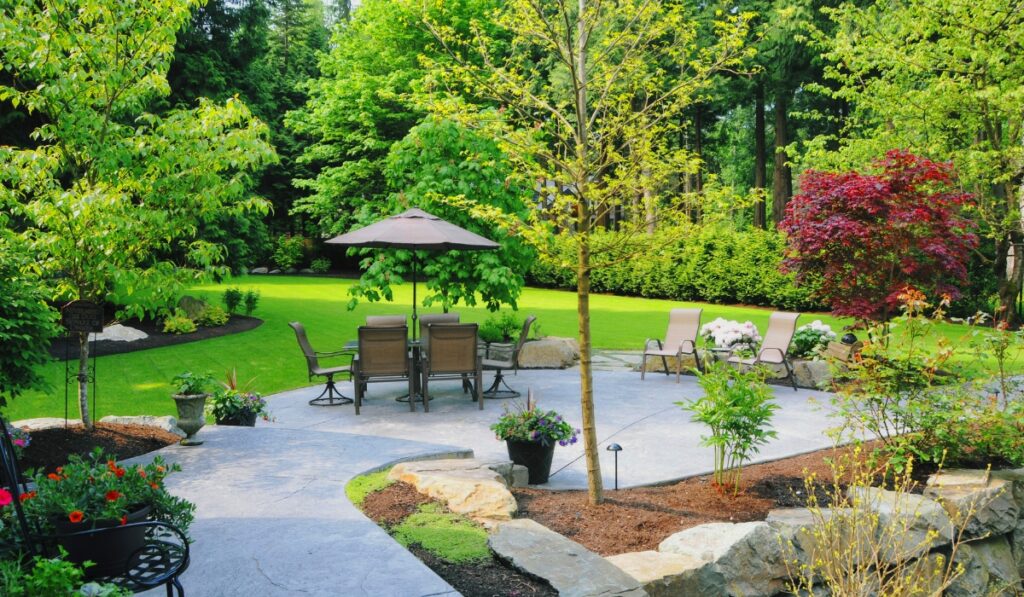
California’s summers are renowned for their sunshine, warmth, and unfortunately, their dryness. As water conservation becomes increasingly crucial, it’s time to rethink our landscaping choices and embrace the beauty of drought-tolerant designs. At DK Landscaping, we specialize in creating stunning, sustainable landscapes that flourish even in the harshest conditions.
The Importance of Water Conservation
With California facing ongoing drought conditions, responsible water use is paramount. Traditional lawns and water-hungry plants strain our precious resources and can lead to hefty water bills. By transitioning to drought-tolerant landscaping, we can significantly reduce our water consumption, create more sustainable environments, and still enjoy beautiful outdoor spaces.
Embracing the Beauty of Drought-Tolerant Plants
Drought-tolerant landscaping doesn’t mean sacrificing beauty or vibrancy. Many stunning plants thrive in arid conditions, offering a diverse palette of colors, textures, and forms. These plants have adapted to survive with minimal water, often boasting features like succulent leaves, deep roots, or silvery foliage that reflects sunlight.
Some popular drought-tolerant plants for California landscapes include:
- Succulents: Echeveria, Agave, Aloe
- Native Plants: California Poppy, Ceanothus, Manzanita
- Ornamental Grasses: Purple Fountain Grass, Blue Fescue, Feather Reed Grass
- Drought-Tolerant Shrubs: Lantana, Lavender, Rosemary
Designing Your Drought-Tolerant Landscape
Creating a successful drought-tolerant landscape involves careful planning and consideration of several factors:
- Soil: Improve soil drainage and water retention by adding organic matter like compost.
- Sun Exposure: Choose plants that are well-suited to your yard’s specific sun and shade conditions.
- Hydrozoning: Group plants with similar water needs together to optimize irrigation efficiency.
- Mulching: Apply a layer of mulch to conserve moisture, suppress weeds, and regulate soil temperature.
- Irrigation: Install a water-efficient irrigation system, such as drip irrigation, to deliver water directly to plant roots.
Beyond Plants: Creative Landscaping Ideas
Drought-tolerant landscaping goes beyond plant selection. Consider incorporating these elements into your design:
- Hardscaping: Use pavers, gravel, or decomposed granite to create patios, walkways, and other non-plant areas.
- Dry Creek Beds: Mimic natural drainage channels with decorative rock and gravel beds.
- Rain Gardens: Capture and filter rainwater runoff with strategically placed depressions filled with native plants.
- Water Features: Add a touch of tranquility with a small fountain or recirculating water feature.
DK Landscaping: Your Partner in Sustainable Design
At DK Landscaping, we are passionate about creating beautiful, water-wise landscapes that thrive in California’s climate. Our team of experts can guide you through every step of the process, from plant selection and design to installation and maintenance.
Let us help you transform your outdoor space into a sustainable oasis that conserves water, supports local ecosystems, and brings you joy for years to come. Contact us today for a free consultation!
Remember, drought-tolerant landscaping is an investment in the future of our environment and your outdoor living experience. Let’s work together to create a more sustainable and beautiful California.
Fire-Safe Landscaping: Protecting Your California Home and Property
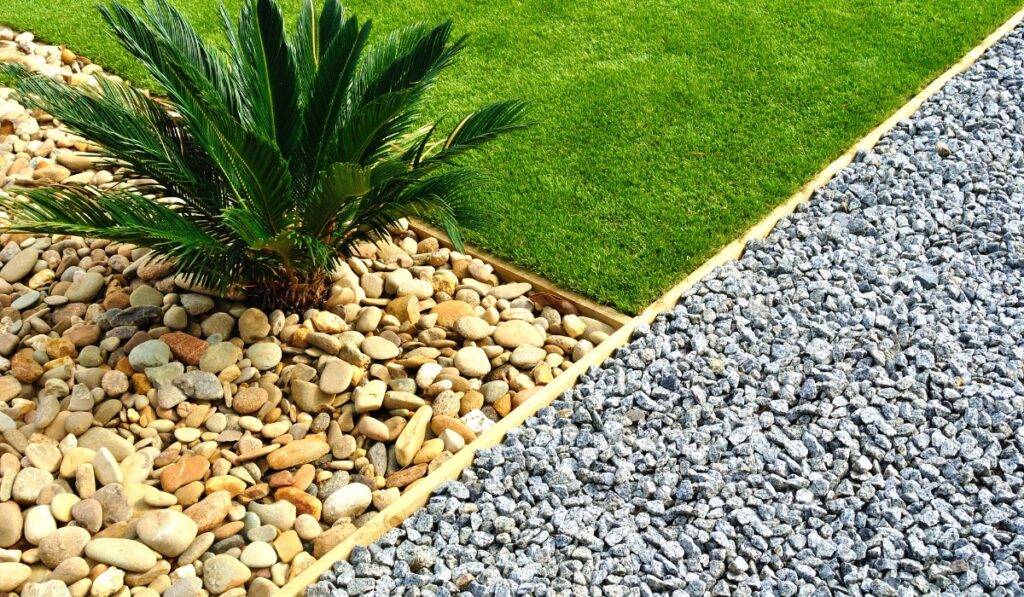
Wildfires are an unfortunate reality for many Californians, particularly during the dry summer and fall months. While we can’t completely eliminate the risk, we can take proactive steps to protect our homes and properties through fire-safe landscaping. DK Landscaping is committed to helping you create a beautiful and resilient landscape that minimizes fire hazards.
Understanding Defensible Space
The concept of defensible space is crucial in fire-prone areas. It involves creating zones around your home where vegetation is managed to reduce the intensity and spread of fire. This gives firefighters a better chance to defend your property and potentially stop the fire’s advance.
Generally, there are three zones to consider:
- Zone 0 (0-5 feet from the home): This zone should be kept clear of all flammable materials, including plants, mulch, and debris. Hardscaping like gravel, concrete, or pavers is ideal here.
- Zone 1 (5-30 feet from the home): In this zone, focus on low-growing, fire-resistant plants with adequate spacing between them. Avoid highly flammable plants and keep trees pruned to reduce fuel ladders.
- Zone 2 (30-100 feet from the home): While less critical, this zone should still be managed to reduce fire intensity. Maintain healthy trees and shrubs, remove dead vegetation, and create fuel breaks if possible.
Fire-Resistant Plant Selection
Choosing the right plants is essential for fire-safe landscaping. Look for plants with the following characteristics:
- Low flammability: Select plants with high moisture content, low sap or resin production, and minimal deadwood accumulation.
- Drought tolerance: Plants that require less water are less likely to become dry and flammable during the hot summer months.
- Native species: Native plants are often well-adapted to the local climate and less prone to fire hazards.
Some examples of fire-resistant plants for California include:
- Trees: Coast Live Oak, California Sycamore, Western Redbud
- Shrubs: Toyon, Coffeeberry, Manzanita
- Groundcovers: Ice Plant, Lantana, Creeping Thyme
Maintenance Tips for Fire Safety
Regular maintenance is vital to keep your landscape fire-safe. Here are some essential tips:
- Irrigation: Water deeply and less frequently to encourage deep root growth and drought tolerance. Avoid overwatering, which can lead to lush growth and increased fire risk.
- Pruning: Regularly prune trees and shrubs to remove dead or diseased branches and maintain adequate spacing.
- Cleanup: Remove fallen leaves, branches, and other debris from your yard regularly.
- Mulch: Use fire-resistant mulch like gravel or decomposed granite, especially near your home.
Additional Fire Safety Considerations
- Roof and gutters: Keep your roof and gutters clean and free of debris. Embers can easily ignite dry leaves and pine needles.
- Vents: Cover vents with fine mesh screens to prevent embers from entering your home.
- Firewood: Store firewood at least 30 feet away from your home and other structures.
DK Landscaping Can Help
Creating a fire-safe landscape requires careful planning and execution. DK Landscaping has the expertise and experience to help you design and maintain a beautiful, resilient landscape that protects your home and property from wildfires.
Contact us today for a free consultation and let us help you create a fire-safe oasis.
Remember, fire safety is an ongoing process. By implementing these tips and partnering with DK Landscaping, you can significantly reduce the risk of wildfire damage and enjoy peace of mind year-round.
Creating a Pollinator Paradise: Plants That Attract Bees and Butterflies in Rohnert Park, California
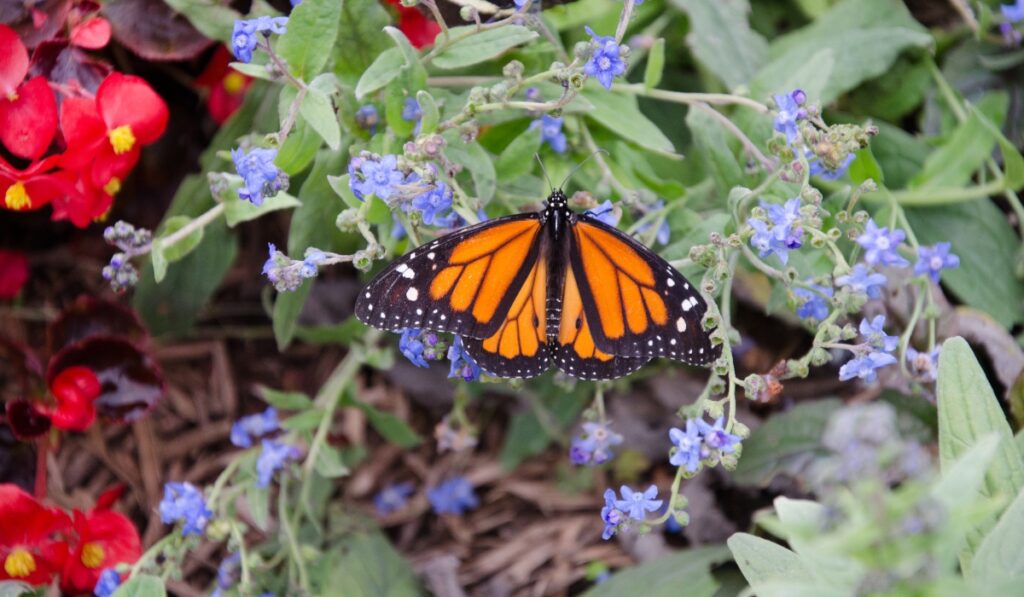
Transforming your garden into a haven for pollinators not only contributes to the local ecosystem’s health but also brings life and beauty to your yard. For residents of Rohnert Park, California, fostering a landscape that invites bees and butterflies is both a rewarding endeavor and a step toward sustainability. Here’s how you can create your own pollinator paradise with plants ideally suited for our climate and region.
Why Focus on Pollinators?
Pollinators like bees and butterflies are essential to the propagation of many plants and crops. By attracting these beneficial insects, you’re helping to support biodiversity, which is crucial for ecological balance. Plus, watching these creatures flit from flower to flower adds an element of dynamic beauty to your garden.
Choosing the Right Plants
Selecting native plants that thrive in the Rohnert Park area ensures lower maintenance, better survival rates, and a natural appeal to local pollinators. Here are some top choices to consider:
1. California Poppy (Eschscholzia californica) – This state flower is not only vibrant and drought-tolerant but also a favorite among bees. Its golden blooms add a splash of color to any garden from early spring through fall.
2. Lavender (Lavandula) – With its soothing fragrance and lovely purple spikes, lavender is irresistible to bees and butterflies. It’s also drought-resistant, making it ideal for California gardens.
3. Sage (Salvia) – There are several native sages to choose from, like Cleveland sage (Salvia clevelandii), which is highly aromatic and attracts a variety of bees and hummingbirds.
4. Manzanita (Arctostaphylos) – Early blooming manzanita provides nectar and pollen during late winter and early spring, a crucial time for many pollinators.
5. Milkweed (Asclepias spp.) – As the breeding ground for monarch butterflies, milkweed is essential for their lifecycle. It’s a must-have for any butterfly garden.
6. Sunflower (Helianthus annuus) – Bees love sunflowers, and their large, bold faces are a cheerful addition to any setting.
7. Penstemon – With their tubular flowers, penstemons are particularly attractive to hummingbirds and butterflies.
Design Tips for Pollinator Gardens
- Group Similar Plants Together: Clusters of the same plant species are more likely to attract pollinators than single plants scattered throughout the landscape.
- Provide a Water Source: A simple birdbath or even a shallow dish with rocks and water can provide pollinators with the hydration they need.
- Avoid Pesticides: Chemicals can harm the very creatures you’re trying to attract. Opt for organic pest control methods to keep your garden safe for pollinators.
- Incorporate Year-Round Blooms: Choose a variety of plants that bloom at different times throughout the year to provide a constant food source for bees and butterflies.
The Bigger Picture
By creating a pollinator-friendly garden, you’re contributing to the preservation of local wildlife and promoting ecological diversity. The beauty of such a garden is that it’s not only a sanctuary for pollinators but also a tranquil retreat for you and your family.
At DK Landscaping, we are committed to helping Rohnert Park residents create beautiful, sustainable landscapes. Contact us today to learn more about planting a pollinator paradise in your backyard, and let’s make a positive impact together!
The Benefits of Professional Landscaping on Property Value in California
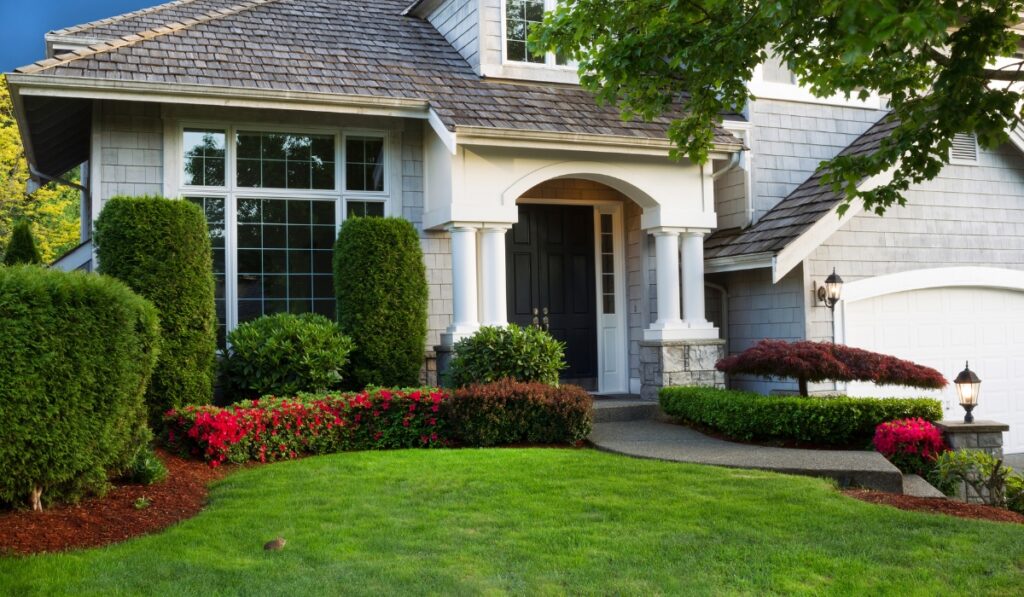
In California, where the climate and outdoor lifestyle play a significant role in everyday life, the appeal of a well-maintained landscape cannot be overstated. Whether you’re in bustling cities like Los Angeles, charming coastal towns, or the serene suburbs of Rohnert Park, professional landscaping offers more than just aesthetic enhancement. It significantly boosts property value and has a profound impact on curb appeal. Here’s a deeper look at how professional landscaping can be a wise investment for California homeowners.
Enhanced Curb Appeal
First impressions are crucial, and the exterior of your home is the first thing potential buyers see. A professionally landscaped property with lush greenery, balanced designs, and vibrant colors instantly boosts curb appeal, making your home stand out in the market. Well-chosen plants and hardscape elements that complement the architectural style of your home can create a compelling first impression that increases overall marketability.
Increased Property Value
Studies have shown that professional landscaping can increase a property’s value by up to 15%. In California’s competitive real estate market, this can translate to a significant return on investment. The aesthetic and functional improvements made through landscaping not only add immediate value but also contribute to long-term property appreciation.
Cost-Effective Renovations
Compared to other home renovations like kitchen remodels or adding a swimming pool, landscaping is a cost-effective way to enhance property value. The modifications can be as simple as adding flower beds, installing a new lawn, or as elaborate as creating outdoor living spaces with kitchens and fire pits. Each project can be tailored to fit a variety of budgets and still yield high returns.
Reduced Time on Market
A well-landscaped property not only attracts more buyers but can also lead to a quicker sale. Homes with mature gardens and thoughtful layouts tend to sell faster than their barren counterparts. This is particularly important in markets where the speed of sale can be as critical as the sale price.
Improved Energy Efficiency
Professional landscaping can also improve the energy efficiency of your home. Proper placement of trees and shrubs can provide shade during the hot California summers, reducing the need for air conditioning. Additionally, greenery can act as a windbreak and insulate the home during cooler months, reducing heating costs.
Eco-Friendly Benefits
In a state that values sustainability, professional landscaping using native plants and eco-friendly practices can also appeal to environmentally conscious buyers. Techniques such as xeriscaping, efficient irrigation systems, and the use of mulch contribute to a landscape that requires less water and maintenance, which is particularly appealing in drought-prone areas like California.
Aesthetic and Functional Harmony
A professional landscaper can strategically design your outdoor space to balance aesthetics with functionality. This means creating spaces that are not only beautiful but also usable, such as outdoor seating areas, vegetable gardens, and pathways that enhance the living experience and appeal to a broader range of buyers.
Partner with DK Landscaping
At DK Landscaping, we understand the unique climatic and cultural nuances of landscaping in California. We are committed to transforming your outdoor spaces in ways that not only reflect your personal style but also maximize your property’s value and appeal. Contact us today to learn how our expert services can enhance your property in Rohnert Park and beyond, setting the stage for a rewarding and profitable sale.
Transform Your Garden into a Paradise: Tips from KD Landscaping
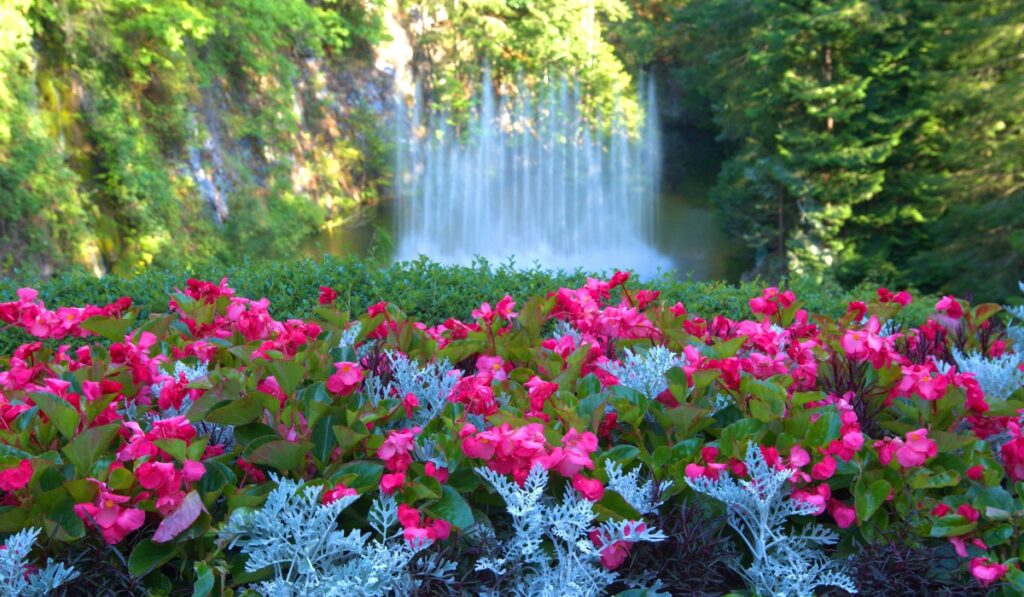
Creating a garden that feels like a slice of paradise is a rewarding journey, one that enriches both your home and wellbeing. It’s about crafting a space that speaks to your soul, offering a retreat from the hustle and bustle of everyday life. Whether you have a sprawling lawn or a modest balcony, transforming your garden into a personal Eden is achievable with a blend of creativity, planning, and a touch of nature’s magic.
Envision Your Paradise
Begin by envisioning what paradise means to you. Is it a serene Zen garden, a vibrant floral oasis, or a cozy nook brimming with greenery? Consider your space, climate, and the amount of time you can dedicate to garden maintenance. Crafting a mood board can help solidify your vision, combining elements like plants, colors, and themes that resonate with your concept of paradise.
Select a Theme
Your garden’s theme is its heartbeat. It could be centered around a color scheme, such as pastel blooms or lush greens, or a more tangible concept like a butterfly garden, herb haven, or a tropical escape. A theme not only guides your plant and decor selections but also ensures a cohesive aesthetic throughout your space.
Plan Your Plant Palette
Plants are the essence of your garden, bringing your theme to life. Research plants that thrive in your climate and suit your garden’s light conditions. Mix textures, heights, and colors for a dynamic look. Remember to consider blooming periods to ensure your garden remains vibrant through the seasons. Don’t forget about foliage; sometimes, the most tranquil gardens are those lush with varied shades of green.
Incorporate Water Features
The gentle sound of water can transform your garden into a tranquil paradise. Consider adding a small fountain, a bird bath, or even a miniature pond. Water features attract wildlife and create a serene atmosphere, making your garden a true escape from the outside world.
Design Pathways and Seating Areas
Pathways not only add structure to your garden but also invite exploration. Use natural materials like stone or wood to blend with the landscape. Introduce seating areas where you can relax and enjoy the beauty of your surroundings. A well-placed bench, a hammock, or a gazebo can become a focal point of your garden paradise.
Lighting and Decor
Soft lighting can make your garden enchanting by night. Solar-powered lights, lanterns, or string lights can illuminate paths and highlight key features. Decorate with items that enhance your theme, such as statues, wind chimes, or decorative stones. Remember, less is often more; choose pieces that complement the natural beauty of your space.
Maintain and Evolve
A paradise garden is ever-evolving. Regular maintenance is key to ensuring your garden remains a sanctuary. As your garden grows, you may discover new inspirations or learn more about your plants’ needs. Embrace these changes, as they are part of the joy of gardening.
Transforming your garden into a paradise is a journey of love and creativity. It’s about crafting a space that reflects your idea of beauty and tranquility. With thoughtful planning and a touch of nature’s magic, your garden can become a cherished escape, a place where both you and nature thrive in harmony.
The Ultimate Guide to Year-Round Yard Cleanup and Maintenance
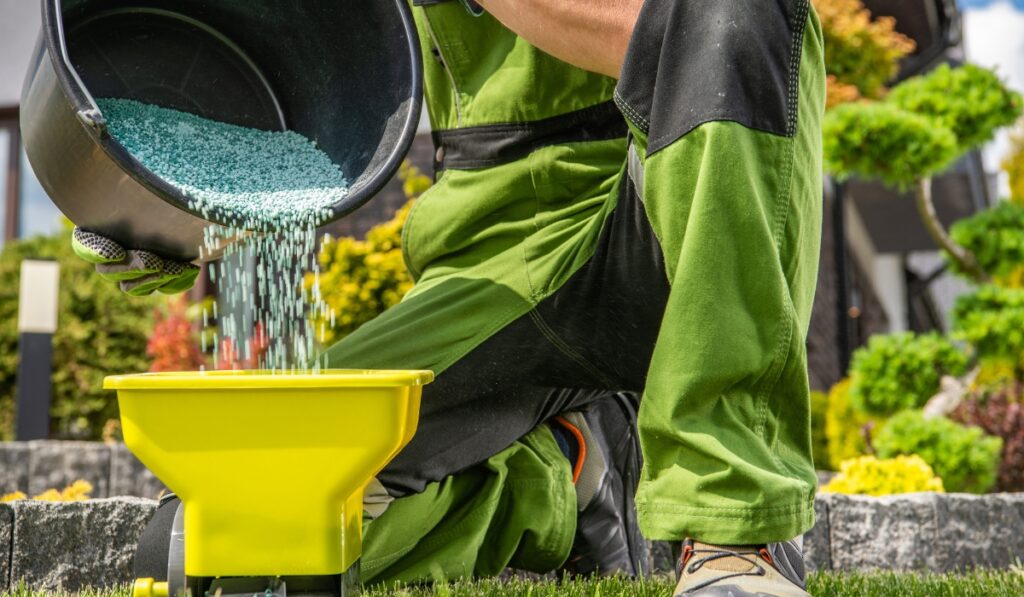
Maintaining a beautiful yard is a year-long commitment that requires careful planning and execution. With each season comes a new set of challenges and opportunities to enhance your outdoor space. This comprehensive guide will walk you through the essentials of year-round yard cleanup and maintenance, ensuring your garden thrives in harmony with the changing seasons.
Spring Awakening
As spring unfurls its fresh canvas, the awakening of your garden heralds a season of rebirth and rejuvenation. This period is pivotal for setting the tone for a flourishing garden throughout the year. Begin with a thorough cleanup, removing winter’s remnants—such as fallen branches, leaves, and other debris—to clear the way for new growth. Pruning plays a crucial role in spring; it not only shapes your plants but also promotes healthy development and blossoming. However, it’s essential to know which plants benefit from spring pruning, as timing can affect flowering and growth.
Aeration is another vital task; it alleviates soil compaction, allowing air, water, and nutrients to penetrate the grass roots, laying the groundwork for a vigorous lawn. Early spring is also the ideal time to rejuvenate your garden beds, preparing them for the season’s planting. Incorporating organic matter or compost improves soil health, providing a nutrient-rich environment for plants to thrive.
As new life sprouts in your garden, consider the layout and plan for seasonal additions. Early spring is an opportune moment to plant hardy annuals and perennials, which will establish themselves quickly in the cool, moist soil, ensuring a vibrant display as the seasons progress. By embracing these springtime rituals, you cultivate not just a garden but a sanctuary that grows in beauty and vitality with each passing year.
Summer Vigilance
In the height of summer, your garden enters a phase of intense growth and vitality, necessitating vigilant care to sustain its beauty and health. This period requires a proactive approach to weed management. Regularly removing weeds prevents them from competing with your plants for essential nutrients and water. Mulching becomes an indispensable ally, serving a dual purpose: it conserves soil moisture, crucial during the sweltering days, and acts as a natural barrier against the emergence of unwanted weeds.
Efficient water management is key during this time. Checking and adjusting your irrigation system ensures that your garden receives the right amount of water without waste, a critical consideration during times of potential drought. Adjusting watering schedules to the cooler parts of the day minimizes evaporation and maximizes the water’s benefit to your plants.
Mowing practices should adapt to the summer conditions as well. Keeping the grass at a slightly longer length than usual helps to protect the roots from the intense sun and heat, promoting a healthier, more resilient lawn. This approach not only enhances the green lushness of your garden but also supports its overall ecosystem, encouraging a balance between beauty and sustainability as the season unfolds.
Autumn Preparation
As autumn paints the landscape in vibrant hues, it’s a signal to start preparing your garden for the impending cold. This season is crucial for maintenance tasks that protect and invigorate your garden’s future growth. Raking and removing fallen leaves are essential to avoid mold and fungus, which thrive under damp, decomposing foliage. Autumn’s cool weather is also ideal for overseeding and fertilizing your lawn, setting the stage for robust, green growth when spring arrives.
Planting bulbs during this time promises the reward of early blooms, offering a burst of color at winter’s end. Additionally, autumn is when you should begin winterizing tasks, such as protecting sensitive plants from frost and preparing irrigation systems for the freeze, ensuring they remain functional for the next growing season. This proactive approach not only preserves your garden’s beauty and health through the winter but also lays the groundwork for a flourishing landscape in the year ahead.
Winter Care
Winter’s quiet might suggest a pause in garden activity, but it’s actually a critical period for protective measures and forward planning. Wrapping plants in burlap or frost cloths shields them from the harshest winter elements, preserving your garden’s vitality. This dormant season offers a valuable opportunity for reflection and strategy: assess the past year’s successes and areas for improvement. It’s a perfect time to dream up new garden layouts or consider different plant varieties that could enhance your garden’s diversity and resilience. Planning during these colder months ensures that you’re ready to spring into action when the weather warms, with a clear vision for your garden’s future.
The Foundation of Flourishing Gardens: Understanding Soil Health

Welcome to another insightful post from DK Landscaping, where we dive into the essentials of creating and maintaining vibrant gardens. Today, we’re focusing on a critical, yet often overlooked, aspect of landscaping: soil health. Understanding and nurturing the soil is the first step towards a flourishing garden. Let’s explore why soil health is foundational and how you can enhance it for a thriving outdoor space.
The Vital Role of Healthy Soil
Soil is not just dirt. It’s a living, breathing entity that plays a crucial role in supporting plant life. Healthy soil fosters a rich ecosystem of bacteria, fungi, worms, and other organisms that work together to break down organic matter, enriching the soil and providing essential nutrients to plants.
Nutrient Availability and Soil Health
Plants rely on soil for water, oxygen, and nutrients. Healthy soil has the right balance of minerals and organic matter, which releases nutrients in a form that plants can absorb. Understanding the nutrient content of your soil is key to identifying which amendments might be needed to support your garden.
Water Retention and Drainage
The structure of healthy soil allows it to effectively retain moisture, providing plants with a consistent water supply. It also ensures proper drainage, preventing waterlogged roots which can lead to plant diseases. Balancing moisture retention with adequate drainage is a hallmark of soil health.
Enhancing Your Soil Health
Testing Your Soil
The first step in improving soil health is understanding its current condition. Soil tests reveal pH levels, nutrient deficiencies, and organic matter content, guiding your amendment choices.
Organic Matter and Composting
Adding organic matter is one of the best ways to enhance soil health. Compost improves soil structure, nutrient content, and microbial activity, supporting vibrant plant growth.
Mulching: A Dual Purpose Ally
Mulching conserves moisture, suppresses weeds, and as it decomposes, adds organic matter back into the soil, improving its health and fertility.
Natural Fertilizers and Amendments
Choosing the right fertilizers and soil amendments is crucial. Organic options like bone meal, blood meal, and green manure can provide necessary nutrients without harming soil organisms.
Embracing Crop Rotation and Cover Crops
In larger garden spaces, rotating crops and using cover crops can significantly improve soil health by preventing nutrient depletion and enhancing soil structure.
The Impact of Soil Health on Garden Success
Healthy soil is the bedrock of a flourishing garden. It supports plant health, aids in disease resistance, and contributes to the overall beauty and productivity of your landscaping efforts.
By investing time and resources into understanding and improving soil health, you’re laying the groundwork for a garden that not only grows but thrives.
At DK Landscaping, we believe that a deep understanding of soil health is essential for any successful landscaping project. By focusing on the foundation beneath our feet, we can create lush, vibrant gardens that are a testament to the power of healthy soil.
Remember, every great garden starts with great soil. Let’s make your garden flourish together.
Saving Water, Beautifying Spaces: Water-Efficient Landscaping Techniques
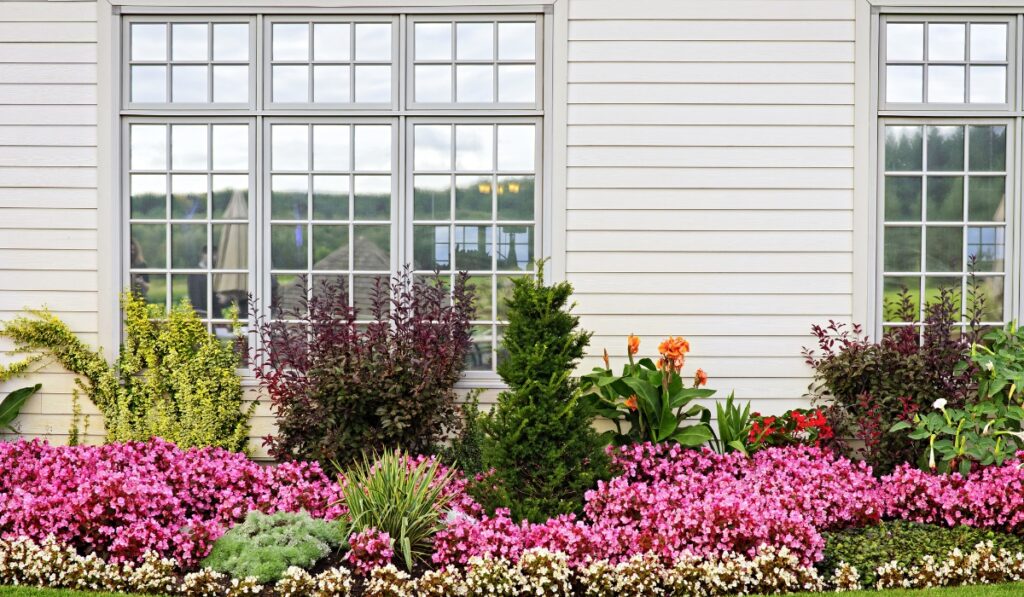
Welcome to the DK Landscaping blog, where we blend beauty with sustainability. In today’s post, we’re diving into the heart of water-efficient landscaping techniques that not only save precious water resources but also transform your outdoor spaces into stunning eco-friendly havens.
Embracing the Basics of Water Efficiency
Understanding Your Landscape’s Needs
Before we start, it’s crucial to understand the unique needs of your landscape. This means assessing soil type, sunlight, and the local climate. By understanding these elements, you can make informed choices that naturally reduce water usage.
The Role of Native Plants
Native plants are the cornerstone of water-efficient landscaping. They’re adapted to the local environment, requiring less water than non-native species. We’ll explore how to select and incorporate these into your design for a resilient and vibrant garden.
Innovative Irrigation Techniques
Drip Irrigation: A Closer Look
Drip irrigation is a game-changer for water efficiency. By delivering water directly to the roots of plants, it minimizes waste and maximizes growth. We’ll guide you through setting up a system that suits your landscape’s specific needs.
Timing is Everything: Smart Irrigation Controllers
Learn how integrating smart irrigation controllers can automate and optimize your watering schedule based on real-time weather conditions, saving water and boosting plant health.
Mulching and Soil Management
The Magic of Mulch
Mulch isn’t just for looks. It plays a pivotal role in retaining soil moisture, regulating temperature, and suppressing weeds. Discover the best types of mulch for your garden and how to apply them effectively.
Soil Amendment Strategies
Healthy soil equals healthy plants. We’ll share tips on improving soil structure and fertility, ensuring your garden thrives while reducing the need for supplemental watering.
Designing with Water Efficiency in Mind
Zoning Your Garden for Water Efficiency
Creating zones in your garden based on water needs can significantly reduce waste. We’ll help you design a layout that groups plants with similar watering requirements together, making your landscape both beautiful and water-wise.
The Beauty of Xeriscaping
Xeriscaping doesn’t mean sacrificing color or variety. Learn how to design a stunning, low-water landscape using drought-tolerant plants and creative design principles.
Beyond the Garden: Rainwater Harvesting
Catching Every Drop: The Basics of Rainwater Harvesting
Rainwater harvesting systems can supplement your water supply beautifully. From simple rain barrels to more sophisticated systems, we’ll show you how to capture and use rainwater effectively in your garden.
The Impact of Water-Efficient Landscaping
Environmental and Economic Benefits
Adopting water-efficient landscaping techniques isn’t just good for the planet—it can also reduce your water bill. We’ll discuss the broader benefits of making these changes, from supporting local ecosystems to contributing to global water conservation efforts.
At DK Landscaping, we believe in creating beautiful, sustainable landscapes that stand the test of time. We hope this guide inspires you to adopt water-efficient practices that make a difference in your garden and the world. Stay tuned for more tips and insights on eco-friendly landscaping. Contact us today if you need help with your landscaping!





